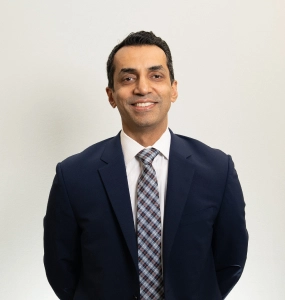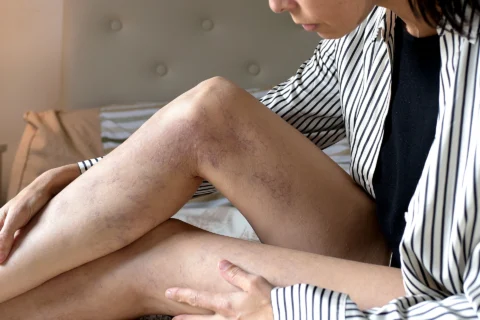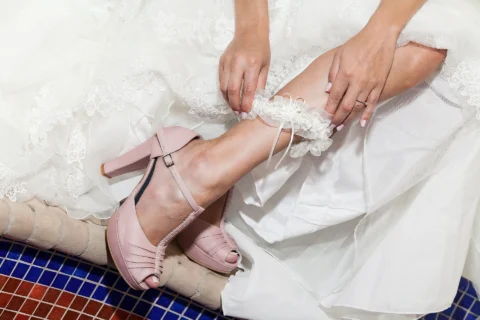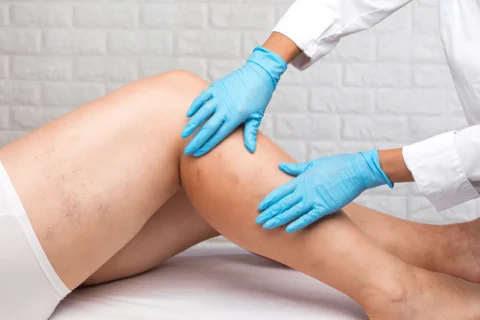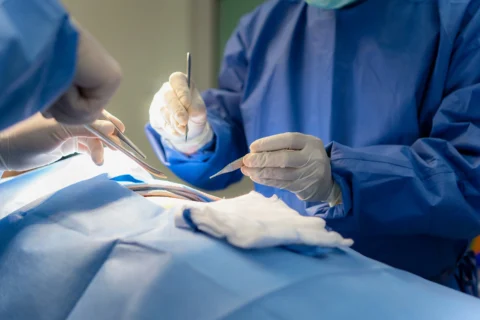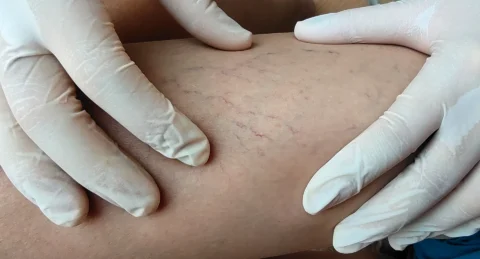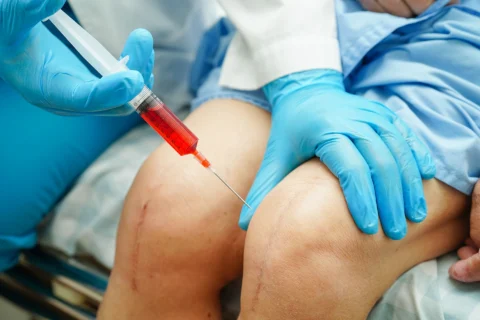Around 60 percent of Americans are suffering from vein disorder and around a quarter of those who have varicose veins are men. If untreated, varicose veins can become venous insufficiency, which is a more serious condition. Even if varicose veins are usually considered a female concern, men shouldn’t let the stigma prevent them from addressing the pain and discomfort they may be feeling because of their leg veins.
So how is the treatment for varicose veins in men? Most cases can be dealt with by doing lifestyle changes and minimally invasive treatments. For rare cases in which varicose veins become a life-threatening complication, you may need to get vein surgery to avoid complications such as blood clot and deep vein thrombosis. These apply to women as well, and it’s important to address the vein issues of both sexes.
Learn More: What Are The Options For Varicose Vein Surgery?
What Causes Varicose Veins in Men
Family history is the primary cause of varicose veins. If your grandparents and your parents had them, it’s most likely that you’ll also have them sometime in the future. The kind of lifestyle you lead is also a major factor. If you have a job or working situation that requires you to stand for prolonged periods — medical professionals, salesmen, and factory workers — you’re primed to develop these veins later on. Other factors to consider in vein health are aging, obesity, and injury.
How to Tell if You Have a Vein Problem
It’s necessary to know the symptoms of venous disease in order to take action since varicose veins can turn into venous insufficiency if left untreated. To tell if you have a vein problem and a potential patient, look out for bulging or ropy veins, muscle cramping, and skin color changes in your legs. You’ll also experience ache or heaviness on the side, ankles, calves, and feet, as well as swelling on the lower leg and ankle.
Learn More: When To Worry About Varicose Veins?
How to Treat Varicose Veins in a Male Patient
Although there’s surgery for the veins to treat serious cases of varicose veins, most cases can be fixed by wearing compression stockings and getting minimally invasive treatments. Try wearing compression stockings first before considering other treatments. These stockings are meant to steadily squeeze the patient’s legs to help their leg muscles and veins make blood flow more efficient. There are different levels of compression available and your vein specialist can help decide which one is best for you.
If you don’t respond to compression stockings, other treatments for varicose veins can help solve the problem.
- Sclerotherapy — This entails injecting the small and medium-sized varicose veins with a solution or foam which will cause scars that will close those veins. Varicose veins that have been treated should already fade in a few weeks. You may need to get more than one injection to get the best results. Sclerotherapy doesn’t need anesthesia. The procedure can also be performed in your doctor’s office.
- Foam sclerotherapy of large veins — Your large affected vein is injected with a foam solution to close and seal it.
- Laser treatment — This new technology closes off smaller varicose veins and spider veins. Laser treatment sends bursts of light into the vein. This procedure makes the vein slowly disappear. Laser treatment requires no incisions or needles.
- Catheter-assisted procedures — These procedures use radiofrequency or laser energy. Your doctor will be inserting a thin tube into an enlarged vein. The tip of the catheter will then be heated with either laser energy or radiofrequency. The catheter is pulled out and the high temperature destroys the vein by letting it collapse and close. This treatment is recommended for those with larger varicose veins.
- High ligation and vein stripping — In this varicose vein treatment, the abnormal vein is tied off before it joins a deep vein and then removed through small incisions. This is mostly an outpatient procedure for most patients.
- Ambulatory phlebectomy — Smaller varicose veins are eliminated via several tiny skin punctures.
- Endoscopic vein surgery — You may need to get this surgery if you already have a leg ulcer or venous ulcers and if other techniques have failed. The doctor will use a thin video camera inserted in your leg. This will help in visualizing and closing varicose veins. The doctor will then remove the damaged vein through small incisions.
Don’t let restless legs, untreated varicose veins, and vein disorders destroy your flow. Just like women, men too deserve relief from the pain and discomfort that vein disease brings.
Get the Best Treatment for Varicose Veins in Men at Vein Center Doctor

If you’re in New Jersey, New York, and other nearby areas, Vein Center Doctor is the best place to be for all sorts of spider vein and varicose vein problems. Their vein clinic branches offer outpatient vein treatment services — from diagnosis to aftercare — with high success results. They offer a wide range of minimally invasive and non-invasive procedures that use the latest in healthy vein and blood vessel treatment technology.
Their team of experts can address common problems in the bulging vein or diseased vein such as chronic venous insufficiency, and venous reflux with methods such as endovenous ablation and radiofrequency ablation. Call Vein Center Doctor now and schedule your appointment for varicose veins men treatment.
